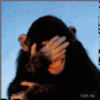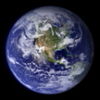Long exposure bulb settings
Jul 28, 2013 07:34:44 #
How does one select parameters for long exposure using the bulb setting? Is there some calculator or cheat sheet for selecting time of exposure?
Jul 28, 2013 07:42:05 #
IzzyKap wrote:
How does one select parameters for long exposure using the bulb setting? Is there some calculator or cheat sheet for selecting time of exposure?
When I had a film camera and now with digital I selected an ISO of 100 to 200 (Then ASA)
I selected 'bulb' as a shutter speed (always open)
I had a shutter cable to the shutter button (now a vello remote)
I clicked the shutter cable and counted 2 seconds, then 4 seconds then 6 seconds and went home to develop the film
Now I click the vello button and do the same. Then look at the digital photo and decide on more time or less time.
I use the vello because I can set delays in taking the photo with the mirror up (camera setting) and out of the way 2 seconds before the shutter opens.
Viewing results are instant without developer, stop and rinse for the film.
Sarge69
Jul 28, 2013 07:47:55 #
Thanks but I was thinking more of conditions requiring several minutes exposures. Depending on environmental conditions, there may only be few opportunities for trial and error approach. Is there some formula to estimate the shutter exposure requiring several minutes?
sarge69 wrote:
When I had a film camera and now with digital I se... (show quote)
Jul 28, 2013 07:52:51 #
IzzyKap wrote:
How does one select parameters for long exposure using the bulb setting? Is there some calculator or cheat sheet for selecting time of exposure?
There are calculators and tables for long exposures, like for nighttime or stars. Did you have anything in particular in mind?
Jul 28, 2013 07:58:42 #
Landscape with 10 ND filter to get smooth, silky water and clouds.
jerryc41 wrote:
There are calculators and tables for long exposures, like for nighttime or stars. Did you have anything in particular in mind?
Jul 28, 2013 08:25:14 #
IzzyKap wrote:
Landscape with 10 ND filter to get smooth, silky water and clouds.
Here are some good references.
http://www.redbubble.com/people/peterh111/journal/4421304-the-ultimate-easy-guide-to-neutral-density-filters?SSAID=314743
http://digital-photography-school.com/how-to-use-a-10-stop-nd-filter-to-take-long-exposure-sunset-images
http://www.cambridgeincolour.com/tutorials/neutral-density-filters.htm
http://www.lightstalking.com/strong-nd-filters
Jul 28, 2013 10:16:44 #
Thank you very much. These should be very helpful.
jerryc41 wrote:
Here are some good references.
http://www.redbubble.com/people/peterh111/journal/4421304-the-ultimate-easy-guide-to-neutral-density-filters?SSAID=314743
http://digital-photography-school.com/how-to-use-a-10-stop-nd-filter-to-take-long-exposure-sunset-images
http://www.cambridgeincolour.com/tutorials/neutral-density-filters.htm
http://www.lightstalking.com/strong-nd-filters
http://www.redbubble.com/people/peterh111/journal/4421304-the-ultimate-easy-guide-to-neutral-density-filters?SSAID=314743
http://digital-photography-school.com/how-to-use-a-10-stop-nd-filter-to-take-long-exposure-sunset-images
http://www.cambridgeincolour.com/tutorials/neutral-density-filters.htm
http://www.lightstalking.com/strong-nd-filters
Jul 29, 2013 13:48:05 #
IzzyKap wrote:
How does one select parameters for long exposure using the bulb setting? Is there some calculator or cheat sheet for selecting time of exposure?
You have to consider this. All the time your shutter is open, say several minutes, your sensor is working. While it's working millions of electrons are passing through it and it can easily over heat... which would destroy the sensor and thereby your camera.
So, all cameras have a built in threshold temperature at which the camera will shut down because of heat. Forcing the shutter to stay open on the bulb setting more than say
30-seconds or a minute is considered a bad idea.
Jul 29, 2013 19:10:45 #
For some projects it's necessary, like star trails, moonlight only illumination, etc.
jimmya wrote:
You have to consider this. All the time your shutter is open, say several minutes, your sensor is working. While it's working millions of electrons are passing through it and it can easily over heat... which would destroy the sensor and thereby your camera.
So, all cameras have a built in threshold temperature at which the camera will shut down because of heat. Forcing the shutter to stay open on the bulb setting more than say
30-seconds or a minute is considered a bad idea.
So, all cameras have a built in threshold temperature at which the camera will shut down because of heat. Forcing the shutter to stay open on the bulb setting more than say
30-seconds or a minute is considered a bad idea.
Jul 29, 2013 19:13:14 #
While looking at these and doing further searches, I came across this helpful free Long Exposure Quick Calculator Chart by Doug Chinnery
http://www.s375595000.websitehome.co.uk/wp-content/uploads/2011/08/Long-Exposure-Quick-Calculator.pdf
Also, there is a very nice Exposure Calculator free app on Android.
These are the exact things that I was seeking.
http://www.s375595000.websitehome.co.uk/wp-content/uploads/2011/08/Long-Exposure-Quick-Calculator.pdf
Also, there is a very nice Exposure Calculator free app on Android.
These are the exact things that I was seeking.
jerryc41 wrote:
Here are some good references.
http://www.redbubble.com/people/peterh111/journal/4421304-the-ultimate-easy-guide-to-neutral-density-filters?SSAID=314743
http://digital-photography-school.com/how-to-use-a-10-stop-nd-filter-to-take-long-exposure-sunset-images
http://www.cambridgeincolour.com/tutorials/neutral-density-filters.htm
http://www.lightstalking.com/strong-nd-filters
http://www.redbubble.com/people/peterh111/journal/4421304-the-ultimate-easy-guide-to-neutral-density-filters?SSAID=314743
http://digital-photography-school.com/how-to-use-a-10-stop-nd-filter-to-take-long-exposure-sunset-images
http://www.cambridgeincolour.com/tutorials/neutral-density-filters.htm
http://www.lightstalking.com/strong-nd-filters
Jul 29, 2013 19:48:45 #
jimmya wrote:
You have to consider this. All the time your shutter is open, say several minutes, your sensor is working. While it's working millions of electrons are passing through it and it can easily over heat... which would destroy the sensor and thereby your camera.
So, all cameras have a built in threshold temperature at which the camera will shut down because of heat. Forcing the shutter to stay open on the bulb setting more than say
30-seconds or a minute is considered a bad idea.
So, all cameras have a built in threshold temperature at which the camera will shut down because of heat. Forcing the shutter to stay open on the bulb setting more than say
30-seconds or a minute is considered a bad idea.
Jim, I think you are partly correct. Yes the shutter is open, but he is ND'ing it to the point of shooting on a dark night. Izzy is really just doing an exposure of 1/100, but taking several minutes to do it. He is filtering the majority of the photons. Kinda with you wearing a welding helmet and looking at the sun. It won't fry your eyes. The camera will shut down, but that's usually on a bright day and using live view, unfiltered. SS
Jul 29, 2013 20:04:00 #
IzzyKap wrote:
While looking at these and doing further searches, I came across this helpful free Long Exposure Quick Calculator Chart by Doug Chinnery
http://www.s375595000.websitehome.co.uk/wp-content/uploads/2011/08/Long-Exposure-Quick-Calculator.pdf
Also, there is a very nice Exposure Calculator free app on Android.
These are the exact things that I was seeking.
http://www.s375595000.websitehome.co.uk/wp-content/uploads/2011/08/Long-Exposure-Quick-Calculator.pdf
Also, there is a very nice Exposure Calculator free app on Android.
These are the exact things that I was seeking.
Thank you
Jul 29, 2013 20:45:41 #
You can, of course, do some math in your head and get the exposure that way. With your camera set to AV, the ISO , and the f-stop you wish to use for the shot, take a reading without the filter. Then double the shutter duration ten times. Example: you get a reading of 1/125 without the filter. Doubled is 1/60. Doubled is 1/30. Doubled ... 1/15, 1/8, 1/4, 1/2, 1st, 2s, 4s, and finally 8s. That will be the equivalent exposure for when the 10 stop filter is in place. Mount your filter, set to Bulb, and shoot away.
Now, if you are like me, and have reached the age where your brain has gone just a tad fuzzy, making use of a smart phone app to do the calculation is a nice solution. There are a few free (or inexpensive) apps available that make the task quite easy. I use one called Longtime Exposure Calculator for my iPhone. Quick and easy. I also have a countdown timer app (Easy Timer) right next to it so I can dial in the timer to give me an audible cue to close the shutter.
Now, if you are like me, and have reached the age where your brain has gone just a tad fuzzy, making use of a smart phone app to do the calculation is a nice solution. There are a few free (or inexpensive) apps available that make the task quite easy. I use one called Longtime Exposure Calculator for my iPhone. Quick and easy. I also have a countdown timer app (Easy Timer) right next to it so I can dial in the timer to give me an audible cue to close the shutter.
Jul 29, 2013 20:58:25 #
Photographer Jim wrote:
You can, of course, do some math in your head and ... (show quote)
Yes, but Jim, to use your method, does one need to be a MENSA card carrying member? I've misplaced my card, and if I were any smarter, I'd remember where I left it!!
Thanks for the app info. SS
Jul 29, 2013 23:38:53 #
SharpShooter wrote:
Yes, but Jim, to use your method, does one need to be a MENSA card carrying member? I've misplaced my card, and if I were any smarter, I'd remember where I left it!!
Thanks for the app info. SS
Thanks for the app info. SS
Could be but I've gotten a heat worning after about 11 minutes and the camera shut down at about 12:30... just a thought.
If you want to reply, then register here. Registration is free and your account is created instantly, so you can post right away.





